What is a Stationary Concrete Batching Plant
A stationary concrete batching plant is a concrete mixing facility built at a fixed location, mainly used in the production of construction materials and the construction engineering field.
The stationary concrete batching plant measures and mixes cement, aggregates (sand and stone), water, and additives according to a certain ratio to produce fresh concrete. Its characteristic is that all components are permanently installed on a pre-prepared concrete foundation, featuring high production capacity and automation, and it is usually not relocated easily.
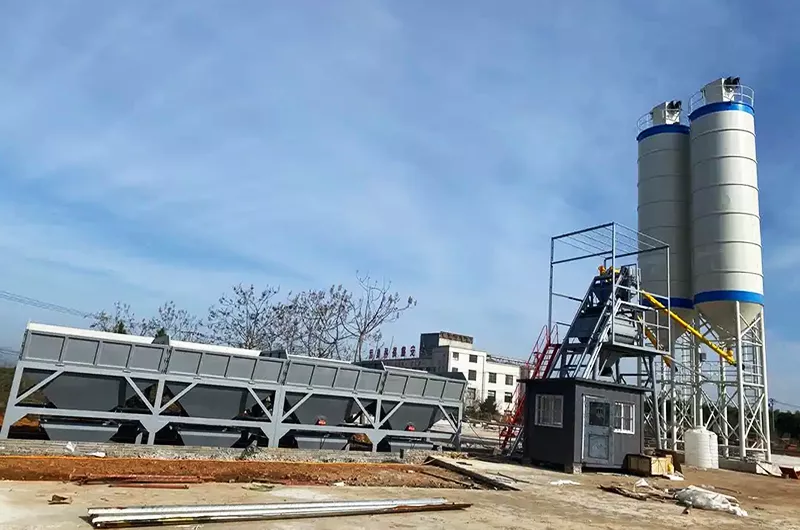
Stationary concrete batching plants are mainly used as industrial facilities for continuous or large-scale concrete production, widely applied in large infrastructure construction, residential community development, bridge and tunnel projects, and other long-term construction works.
Stationary Concrete Batching Plant for Sale
-
 HZS25 Concrete Batching Plant
HZS25 Concrete Batching Plant
Productivity: 25 m³/h | Mixer Capacity: 0.5 m³
-
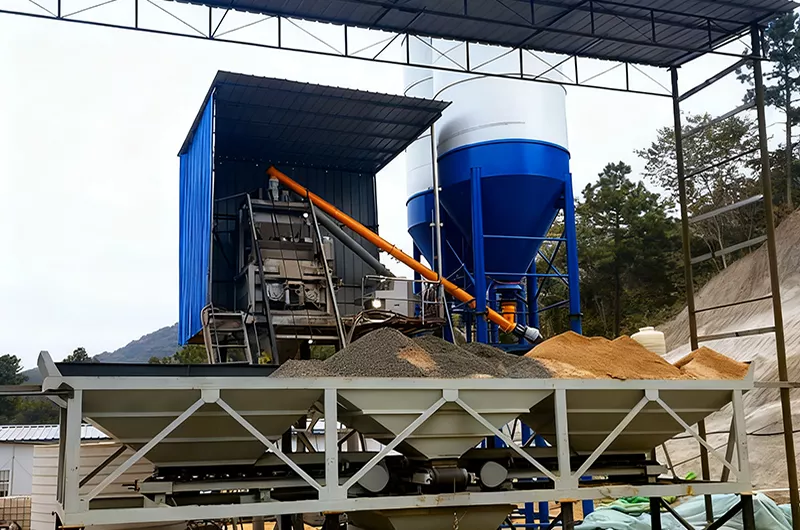 HZS35 Concrete Batching Plant
HZS35 Concrete Batching Plant
Productivity: 35 m³/h | Mixer Capacity: 0.75 m³
-
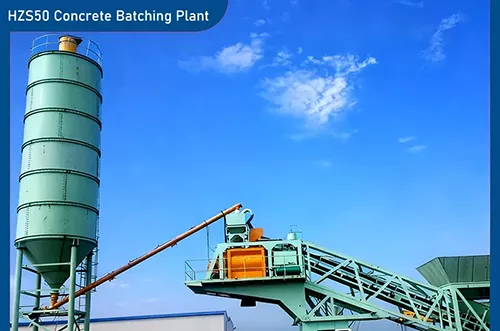 HZS50 Concrete Batching Plant
HZS50 Concrete Batching Plant
Productivity: 50 m³/h | Mixer Capacity: 1.0 m³
-
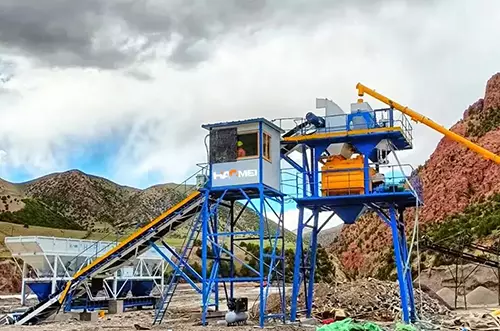 HZS60 Concrete Batching Plant
HZS60 Concrete Batching Plant
Productivity: 60 m³/h | Mixer Capacity: 1.0 m³
-
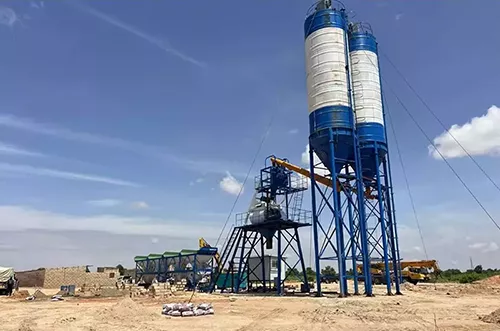 HZS75 Concrete Batching Plant
HZS75 Concrete Batching Plant
Productivity: 75 m³/h | Mixer Capacity: 1.5 m³
-
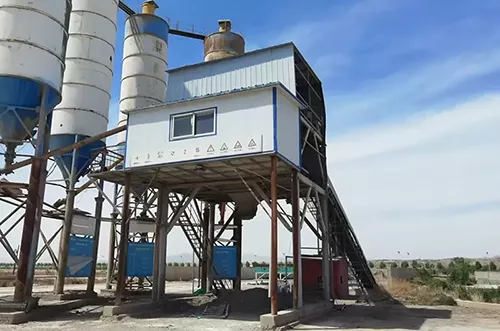 HZS90 Concrete Batching Plant
HZS90 Concrete Batching Plant
Productivity: 90 m³/h | Mixer Capacity: 1.5 m³
-
 HZS120 Concrete Batching Plant
HZS120 Concrete Batching Plant
Productivity: 120 m³/h | Mixer Capacity: 2.0 m³
-
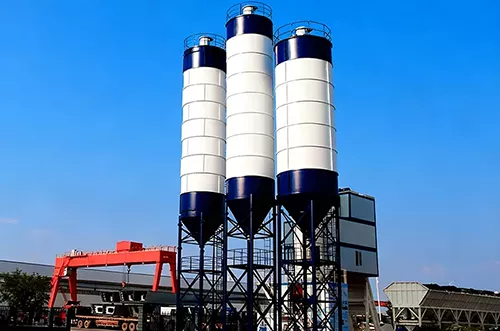 HZS150 Concrete Batching Plant
HZS150 Concrete Batching Plant
Productivity: 150 m³/h | Mixer Capacity: 3.0 m³
-
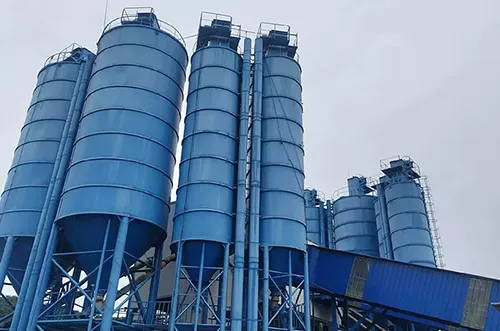 HZS180 Concrete Batching Plant
HZS180 Concrete Batching Plant
Productivity: 180 m³/h | Mixer Capacity: 3.0 m³
-
 HZS240 Concrete Batching Plant
HZS240 Concrete Batching Plant
Productivity: 240 m³/h | Mixer Capacity: 4.0 m³
-
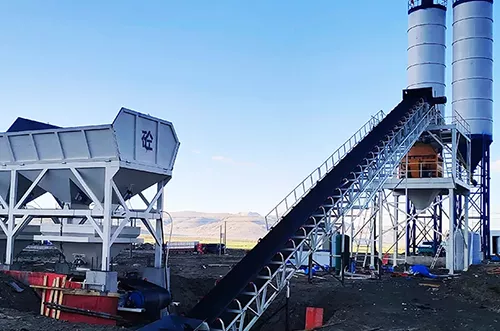 HZS180-Q3000 Concrete Batching Plant
HZS180-Q3000 Concrete Batching Plant
Productivity: 200-270 m³/h | Mixer Capacity: 4.0 m³
Stationary Concrete Batching Plant Parameters
| HZS60 | HZS90 | HZS120 | HZS180 | HZS240 | ||
| Theoretical production(m3/h) | 60 | 90 | 120 | 180 | 240 | |
| Concrete mixer | Type | JS1000 | JS1500 | MAO3000/2000 | MAO4500/3000 | MAO6000/4000 |
| Power(KW) | 18.5 | 65.5 | 74 | 110 | 150 | |
| Discharging capacity (L) | 1000 | 1500 | 2000 | 3000 | 4000 | |
| Aggregate size (Pebble/ Macadam) (mm) | 80/60 | 80/60 | 80 | 150 | 150 | |
| Aggregate Bin volume(m3) | 8.38 | 12 | 20 | 30 | 40 | |
| Belt conveying Capacity(t/h) | 300 | 450 | 550 | 650 | 900 | |
| Weighing Accuracy | Aggregate (KG) | 3000Kg ±2% | 3000Kg ±2% | 2200Kg ±2% | 3000Kg ±2% | 4200Kg ±2% |
| Cement(KG) | 1500Kg ±1% | 1500Kg ±1% | 1200Kg ±1% | 1800Kg ±1% | 2200Kg ±1% | |
| Fly ash(KG) | 600Kg ±1% | 900Kg ±1% | 400Kg ±1% | 500Kg ±1% | 800Kg ±1% | |
| Water (KG) | 600Kg ±1% | 600Kg ±1% | 500Kg ±1% | 800Kg ±1% | 1000Kg ±1% | |
| Additive(KG) | 50Kg ±1% | 50Kg ±1% | 50Kg ±1% | 80Kg ±1% | 80Kg ±1% | |
| Total power(KW) | 120Kw | 165Kw | 130Kw | 170KW | 220KW | |
| Discharging height(M) | 3.8 m | 4.1 m | 4.1m | 4.1m | 4.1m | |
Dry Ready Mix Stationary Plants
The core feature of a dry ready mix stationary concrete batching plant lies in its pre-mixing function. Cement, sand, and aggregate materials are dry-mixed uniformly within the plant to form a consistent dry mix, which is then transported to the construction site. Water is added for secondary mixing before pouring. This production method determines that the equipment composition has distinctive technical characteristics.
- Mixing System: Equipped with a twin-shaft compulsory mixer that only performs dry material mixing without complete concrete mixing. No water or admixture metering system is required.
- Batching System: Uses PLD series aggregate batchers (such as PLD1200/1600/2400) with high-precision sensors, achieving a weighing accuracy within ±0.5%.
- Conveying System: Belt conveyor (for aggregates) + screw conveyor (for powder materials, dust-proof design).
- Storage System: Steel or brick-concrete aggregate bins (with vibrators to prevent clogging) and cylindrical powder silos (equipped with pulse dust collectors).
- Control System: PLC or industrial computer control supporting full automation. Some equipment includes remote monitoring functionality.
Wet Mix Stationary Plants
The wet mix stationary concrete batching plant adopts an integrated mixing production mode, in which cement, sand, aggregate, water, and admixtures are all mixed together inside the plant according to the designed mix ratio to produce finished concrete. The concrete is then transported to the construction site by mixer trucks for direct use. This production mode requires more complex and complete technical configurations.
- Mixing System: Twin-shaft compulsory or planetary mixer, equipped with complete water metering and admixture dosing systems. Mixing shafts often use anti-adhesion technology.
- Batching System: In addition to the aggregate batching machine, independent weighing systems for cement, fly ash, water, and admixtures are required. Accuracy requirements: aggregates ±2%, cement/water/admixtures ±1%.
- Conveying System: Fully enclosed belt conveyor (with top cover and side sealing skirt). Large plants may also include pneumatic powder conveying systems.
- Storage System: Includes aggregate bins, powder silos, and admixture storage tanks. In winter, insulation measures are needed to prevent freezing.
- Control System: Supports real-time monitoring of aggregate moisture content and automatically adjusts water dosage. Can be integrated with the mixer truck dispatching system.
Dry Mix vs Wet Mix Concrete Batching Plants – Key Components and Functional Differences
| Comparison Dimension | Dry Mix Concrete Batching Plant | Wet Mix Concrete Batching Plant |
| Mixing Function | Only performs dry material mixing, no final concrete mixing | Completes full material mixing, outputs finished concrete |
| Measuring System | Measures only dry materials, no water or admixture metering | Measures aggregates, cement, water, and admixtures with higher precision |
| Environmental Focus | Dust control (pulse dust collector, enclosed conveying) | Wastewater treatment (sedimentation tank, sand-gravel separator, water recycling system) |
| Level of Automation | Basic automation, simple parameter control | Requires real-time mix ratio adjustment and coordination of production and transport |
Stationary Concrete Batching Plant Production Capacity
Theoretical capacity of mainstream models
| Plant Model | Matching Mixer | Theoretical Capacity (m³/h) |
| HZS25 (Small) | JS500 | 25 |
| HZS75 (Medium) | JS1500 | 75 |
| HZS120 (Large) | JS2000 | 120 |
| HZS240 (Extra-Large) | JS4000 | 240 |
Capacity comparison between dry and wet mix plants
| Comparison Dimension | Dry Mix Concrete Batching Plant | Wet Mix Concrete Batching Plant |
| Theoretical Capacity per Unit | Same as wet mix for the same model (e.g., HZS75 = 75 m³/h) | Same as dry mix for the same model |
| Actual Capacity | 10%–15% higher (simpler process, no complex ratio control) | Slightly lower (requires precise water-cement ratio and admixture control) |
| System Efficiency | Low cleaning frequency (about 5% of total time), short auxiliary time | High cleaning frequency (10%–15% of total time), requires anti-solidification maintenance |
| Transportation Efficiency | Requires secondary mixing on site, less efficient | Ready for direct use, ideal for large-scale continuous pouring |
Stationary Concrete Batching Plant Features
- Permanently installed or fixed on a foundation, not fully mobile.
- High capacity, designed for long-term projects (e.g., infrastructure and large buildings), not for temporary sites.
- Robust components: including aggregate bins, mixer, weighing system, conveyors, cement silos, and control system.
- High productivity: Available in multiple models, with capacities ranging from tens to hundreds of cubic meters per hour (e.g., HZS90, HZS180, HZS240, where the number indicates theoretical output in m³/h).
- Intelligent control: Equipped with SYMC controller, supports multilingual interface, ensures accurate batching.
- Energy saving and environmentally friendly: Uses variable frequency technology to reduce energy consumption of the mixer and conveyor by 20%–30%, with a fully enclosed structure to minimize dust emissions.
- High reliability: Strong structure, mature design, suitable for intensive and long-term continuous operation.
- Easy management: The control system records each batch of concrete data for quality tracking and cost analysis.
Components of Stationary Concrete Batching Plant
- Aggregate storage bins/hoppers: Used to store sand, gravel, and crushed stone.
- Weighing/feeding system: Precisely measures aggregates, cement, water, and additives using weighing sensors and scales.
- Conveying system: Transports aggregates from bins → conveyor belt or skip hoist → mixer.
- Mixing unit: Depending on production capacity and concrete type, options include single-shaft, twin-shaft, or pan mixers.
- Cement storage and feeding: Cement silos, screw conveyors, and dust collectors.
- Control/automation system: Manages batching, mixing, and process monitoring.
- Other auxiliary systems: Water supply, additive dosing, dust suppression, and sometimes chilled water systems.
Stationary Concrete Batching Plant Key Specifications and What to Consider
- Production capacity (m³/h) — Many plants range from 25 m³/h up to 300 m³/h or even higher.
- Mixer type and size — Output volume (liters), mixing cycle time, and mixer type (twin-shaft, single-shaft, pan) are critical.
- Aggregate bin capacity/number of compartments — More bins or compartments provide greater flexibility for aggregate combinations.
- Installed power/energy consumption — Larger plants require higher installed power.
- Discharge height/layout/footprint — Crucial for site planning and truck loading.
- Automation and control level — The degree of automatic weighing, mixing, and error control impacts efficiency.
- Durability/maintenance/material quality — As these are long-term facilities, structural robustness is essential.
- Site requirements/foundation/civil works — Since the plant is permanently installed, proper site preparation is vital.
Advantages of Stationary Concrete Batching Plant
- High capacity: Suitable for long-term, large-volume projects.
- More stable/reliable operation than mobile plants: Better quality control and minimal downtime during relocation.
- Fixed layout allows for higher automation levels and larger bins/hoppers.
- Potential economies of scale in material handling and batching.
Applications of Stationary Concrete Batching Plant
For medium and small projects with limited site area and budget, a stationary concrete batching plant with bucket-type feeding offers high cost-performance, efficient production, and a compact footprint, meeting the requirements for high-grade concrete production.
- Large infrastructure projects: Highways, railways, bridges, dams, ports, airports, etc.
- Ready-mix concrete companies: Supplying concrete for urban construction and real estate projects.
- Large industrial and civil building projects: Such as factories, power plants, and stadiums.
- Pipe pile and precast component factories: Serving as the core concrete supply source.
Difference Between Stationary and Mobile Concrete Batching Plants
| Feature | Stationary Concrete Batching Plant | Mobile Concrete Batching Plant |
| Installation Method | Fixed installation on a concrete foundation, not movable. | Mounted on a trailer chassis, easy to relocate quickly. |
| Production Capacity | Large to very large | Medium to small |
| Automation Level | Very high | Relatively high, but usually lower than stationary plants |
| Investment and Cost | Higher initial investment, but lower cost per unit at scale. | Lower initial investment and relocation cost. |
| Application Scenario | Long-term, large-scale, fixed-location production. | Short-term or scattered-site medium and small projects. |
| Environmental Performance | Easier to equip with comprehensive environmental protection systems, excellent performance. | Limited environmental control measures. |
Stationary Concrete Batching Plant Working Process
- Feeding: Aggregates are loaded into the respective bins by a loader, and powder materials are pumped into silos by bulk trucks.
- Weighing: After the operator selects the recipe in the control room, the system automatically controls materials to enter their weighing scales according to preset ratios.
- Feeding to mixer: Aggregates are transferred via belt conveyor to the waiting hopper, then combined with powders, water, and admixtures into the mixer.
- Mixing: The mixer performs high-intensity mixing within a set time to form uniform concrete.
- Discharging: The mixed concrete is discharged through the outlet directly into the waiting concrete mixer truck.
- Cycle: The entire process repeats continuously to achieve uninterrupted production.
Key Points for Selecting a Stationary Concrete Batching Plant
When choosing a stationary concrete batching plant, consider:
- Project requirements: Total concrete volume, peak demand, and concrete grades needed.
- Model selection: Choose capacity based on requirements (e.g., HZS120, HZS180, etc.).
- Configuration level: Depending on budget and environmental needs, select standard or high-end configurations (e.g., dust removal, enclosure, wastewater recycling, etc.).
- Site planning: Ensure sufficient space for installation, material storage, and vehicle movement.
- Brand and after-sales: Choose reputable manufacturers for equipment quality and reliable service.
A stationary concrete batching plant is the core equipment in modern concrete production. With its high efficiency, automation, and excellent environmental performance, it has become the preferred choice for large-scale and industrialized concrete manufacturing.
Notes / Limitations
Compared with small or mobile batching plants, the initial investment is higher (due to foundation work, site preparation, and larger equipment).
- Lower flexibility: Once installed, relocation is difficult, so site selection and permanence are crucial.
- Requires proper site preparation (foundation, utilities, dust control, environmental considerations).
- Operation and maintenance: Requires trained operators and regular maintenance of conveyors, mixers, and dust collection systems.
- For smaller-scale or short-term projects, it is not the best choice compared with mobile or compact plants.
Haomei Stationary Concrete Batching Plants Customer Cases
-
 Ethiopian HZS25 Concrete Batching Plant Equipped with JS500 Mixer
Ethiopian HZS25 Concrete Batching Plant Equipped with JS500 Mixer
-
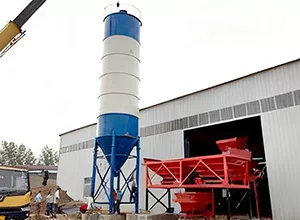 JS750 Mixer-Integrated HZS35 Concrete Batching Plant Operated in Saudi Arabia
JS750 Mixer-Integrated HZS35 Concrete Batching Plant Operated in Saudi Arabia
-
 HZS35 Concrete Batching Plant in the Philippines
HZS35 Concrete Batching Plant in the Philippines
-
 HZS35 Concrete Batching Plant in Ethiopia
HZS35 Concrete Batching Plant in Ethiopia
-
 Philippines HZS50 Concrete Batching Plant
Philippines HZS50 Concrete Batching Plant
-
 Indonesia HZS50 Concrete Batching Plant
Indonesia HZS50 Concrete Batching Plant
-
 HZS50 Concrete Batching Plant Pakistan
HZS50 Concrete Batching Plant Pakistan
-
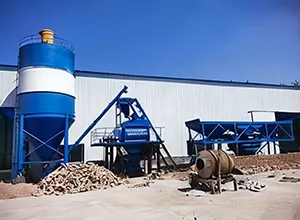 HZS50 Concrete Batching Plant Kazakhstan
HZS50 Concrete Batching Plant Kazakhstan
-
 HZS60 Concrete Batching Plant in Uzbekistan
HZS60 Concrete Batching Plant in Uzbekistan
-
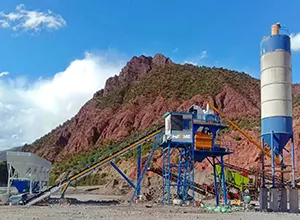 Guinea HZS60 Concrete Batching Plant Installation
Guinea HZS60 Concrete Batching Plant Installation
-
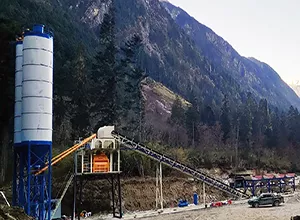 Tanzania HZS60 Concrete Batching Plant Operation
Tanzania HZS60 Concrete Batching Plant Operation
-
 Niger HZS60 Concrete Batching Plant Application
Niger HZS60 Concrete Batching Plant Application
-
 JS1500 Mixer at Indonesia HZS75 Concrete Plant
JS1500 Mixer at Indonesia HZS75 Concrete Plant
-
 Philippines HZS75 Plant Equipped with JS1500 Mixer
Philippines HZS75 Plant Equipped with JS1500 Mixer
-
 HZS75 Concrete Batching Plant project in Saudi Arabia
HZS75 Concrete Batching Plant project in Saudi Arabia
-
 HZS75 Concrete Batching Plant installed in Pakistan
HZS75 Concrete Batching Plant installed in Pakistan
-
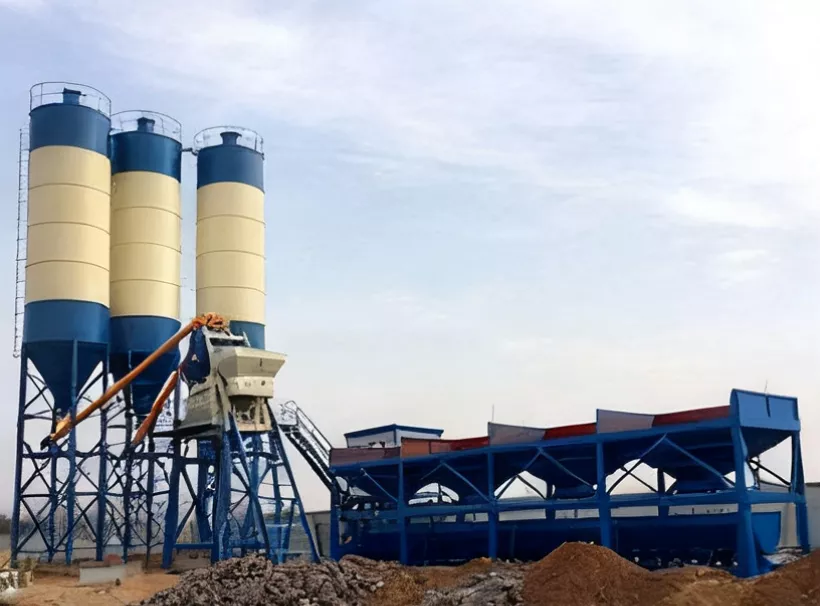 HZS75 Concrete Batching Plant operational in the UAE
HZS75 Concrete Batching Plant operational in the UAE
-
 Saudi Arabia HZS90 Plant Featuring JS1500 Mixer
Saudi Arabia HZS90 Plant Featuring JS1500 Mixer
-
 Chile HZS90 Project with JS1500 Concrete Mixer
Chile HZS90 Project with JS1500 Concrete Mixer
-
 HZS90 Concrete Batching Plant Operation in Ethiopia
HZS90 Concrete Batching Plant Operation in Ethiopia
-
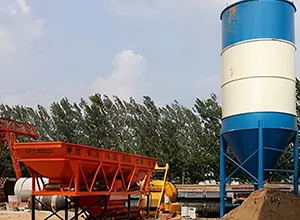 Brazil HZS90 Concrete Batching Plant Delivered
Brazil HZS90 Concrete Batching Plant Delivered
-
 HZS120 Concrete Batching Plant Installed in Saudi Arabia
HZS120 Concrete Batching Plant Installed in Saudi Arabia
-
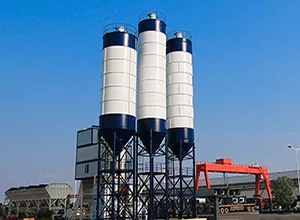 HZS120 Concrete Batching Plant Delivered to the Philippines
HZS120 Concrete Batching Plant Delivered to the Philippines
-
 Nigeria HZS120 Concrete Batching Plant Engineering Case
Nigeria HZS120 Concrete Batching Plant Engineering Case
-
 HZS120 Concrete Batching Plant Successfully Operated in Brazil
HZS120 Concrete Batching Plant Successfully Operated in Brazil
-
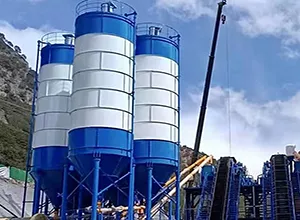 Indonesia HZS120 Concrete Batching Plant Deployment Case
Indonesia HZS120 Concrete Batching Plant Deployment Case
-
 Saudi Arabia HZS150 Concrete Batching Plant Successful Commissioning Case
Saudi Arabia HZS150 Concrete Batching Plant Successful Commissioning Case
-
 Pakistan HZS150 Concrete Batching Plant Installation Site Showcase
Pakistan HZS150 Concrete Batching Plant Installation Site Showcase
-
 Bangladesh HZS150 Concrete Batching Plant Project Installation On-Site Photos
Bangladesh HZS150 Concrete Batching Plant Project Installation On-Site Photos
-
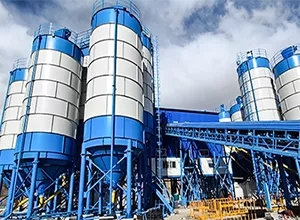 Indonesia HZS150 Concrete Batching Plant Completion Case Sharing
Indonesia HZS150 Concrete Batching Plant Completion Case Sharing
-
 Indonesia HZS180 Concrete Batching Plant Successfully Installed
Indonesia HZS180 Concrete Batching Plant Successfully Installed
-
 Philippines HZS180 Concrete Batching Plant Commissioning Case
Philippines HZS180 Concrete Batching Plant Commissioning Case
-
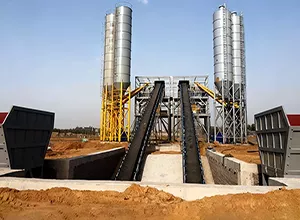 Thailand HZS180 Concrete Batching Plant On-Site Operation
Thailand HZS180 Concrete Batching Plant On-Site Operation
-
 Saudi Arabia HZS180 Concrete Batching Plant Delivery and Startup
Saudi Arabia HZS180 Concrete Batching Plant Delivery and Startup
-
 Kenya HZS25 Concrete Batching Plant Equipped with JS500 Mixer
Kenya HZS25 Concrete Batching Plant Equipped with JS500 Mixer
-
 HZS25 Concrete Batching Plant with JS500 Mixer Operating in Philippines
HZS25 Concrete Batching Plant with JS500 Mixer Operating in Philippines
-
 HZS35 Concrete Plant Installed in Nepal Using JS750 Mixer
HZS35 Concrete Plant Installed in Nepal Using JS750 Mixer
-
 JS750-Powered HZS35 Concrete Batching Plant Delivered to Peru
JS750-Powered HZS35 Concrete Batching Plant Delivered to Peru
-
 JS1000 Mixer-Integrated HZS50 Concrete Batching Plant Operated in Argentina
JS1000 Mixer-Integrated HZS50 Concrete Batching Plant Operated in Argentina
-
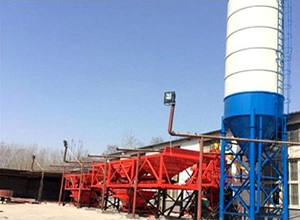 Ethiopia Project: HZS60 Concrete Batching Plant Configured with JS1000 Mixer
Ethiopia Project: HZS60 Concrete Batching Plant Configured with JS1000 Mixer


